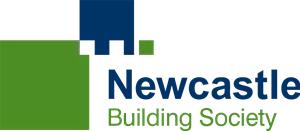Jaywing’s new IFRS 9 Confidence Report reveals a lack of collaboration and skills shortage is limiting organisations’ ability to meet IFRS 9 requirements.
The deadlines to meet IFRS 9 requirements begin in January 2018. However, it’s recommended that models are developed, validated, implemented and tested by the end of 2016. This is to allow lenders time to perform the necessary corroboration of the provision figures under IFRS 9, by running them in parallel for a period alongside the current IAS 39 provisions.
Challenges to implementing solutions
While an integrated approach to IFRS 9 is cited key to success, more than half of organisations (56%) believe the biggest challenge to building IFRS 9 models is the availability of analytical expertise. This was closely followed by the availability of quality data and infrastructure (55%) and timescales associated with developing a compliant solution (50%).
This lack of time and expertise has resulted in four in five organisations recognising a need for outside help, either through the use of outsourced consultancy or using external software solutions, with only one in five businesses (20%) planning to go it alone. Jaywing is already working with eleven lenders in a consultancy capacity and has recently launched an IFRS 9 software solution, Horizon.
Confidence by Sector
The report revealed that banks are taking the lead in their preparedness for IFRS 9 with almost a half of banks (49%) already in the implementation and testing phase. This puts banks firmly ahead of other sectors, with only a third of consumer credit companies (33%) and auto finance businesses (29%) testing at this time, with just 11 weeks to go before the year end. Building societies were found to be the least prepared for IFRS 9 with less than three in 10 (27%) in the testing phase, with the majority of building societies still designing and planning their solution.
While some lenders are feeling confident about their progress towards IFRS 9, others say they are struggling. The best way for lenders to improve their situation is to learn from what’s working with other organisations. That is why tools like automated modelling software are so beneficial. You can quickly and easily adopt advanced models without significantly impacting on business as usual.
Confidence by job function
The research found that different job functions are viewing their organisation’s preparedness for IFRS 9 in isolation of other departments, and without full visibility of the overall picture. Over a third of economic teams (36%) expect their organisation to complete their parallel runs before the end of the year, however the majority of compliance (33%) and finance teams (43%) don’t think their organisations will be ready to parallel run until Q2 2017, with IT departments (31%) even later at Q3 2017.
This demonstrates a clear disconnect between individual teams and when they expect to complete a parallel run, contributing to a divide between job functions and indicating an overall lack of collaboration. As a result, nearly half of those surveyed (47%) agreed that they would use IFRS 9 compliance as an opportunity to improve the infrastructure within their businesses.
What we’re seeing is that lenders believe an integrated approach and collaboration between teams is key to success. While significant strides have been made in collaboration, it appears that too often, individual departments are still taking a modular view to task completion in IFRS 9. As well as harmonising the models, the parallel run phase should create greater alignment of IFRS 9 requirements across internal divisions, in support of the organisation’s overarching goals.
Click here to access the full complimentary report.
Jaywing encourages organisations to achieve a best practice approach to IFRS 9 by focusing on nine key areas:
- Ensure all internal teams are working together under a unified approach
- Assess long-term data requirements and adopt a best practice approach to data management
- Design IFRS 9 models using the most appropriate methodologies
- Build prototype models to test and learn methodologies and assess expected impact
- Refine models and adjust parameters to suit your organisation’s needs
- Adopt clear, focused model governance processes
- Begin the implementation and testing phase early
- Consider ongoing model monitoring and impairment forecasting as part of the design
- Incorporate IFRS 9 processes into business as usual during the parallel run






